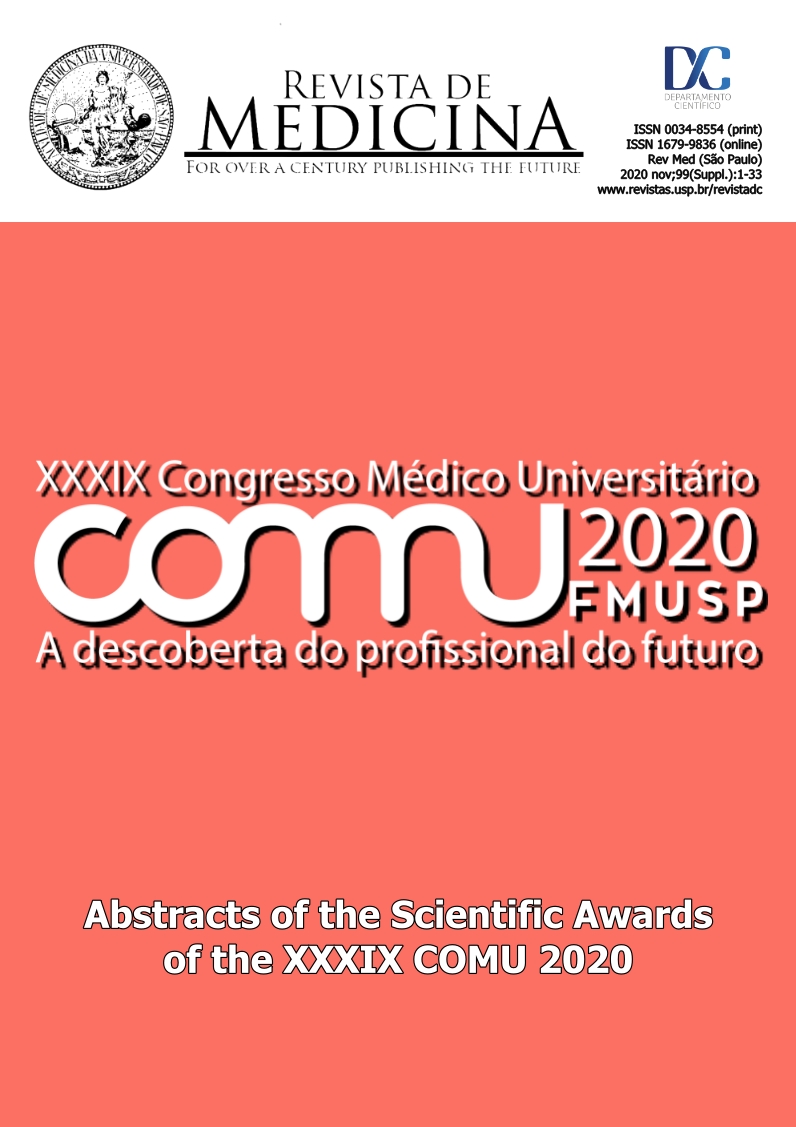Surgical treatment of spontaneous intracranial hemorrhage in patients with cancer
DOI:
https://doi.org/10.11606/issn.1679-9836.v99iSupplp1-1Palavras-chave:
Intracranial hemorrhage, Neurosurgery, CancerResumo
Introduction: Intracranial hemorrhage (ICH) is the most common cerebrovascular event in patients with cancer. We sought to evaluate the outcomes of surgical treatment for ICH and to determine possible pre-operative outcome predictors.
Methods: We retrospectively reviewed surgical procedures for the treatment of ICH in patients with cancer. Analyses included clinical, laboratory, and radiological characteristics. Primary endpoints were survival and mortality in index hospitalization.
Results: Ninety-four emergency neurosurgeries were performed for ICH in 88 different patients with cancer over ten years. 51 patients had chronic subdural hematomas (CSDH: 54.3%), 35 with intraparenchymal hemorrhage (37.2%), 6 with acute subdural hematoma (ASDH: 6.4%), and only 2 with epidural hemorrhages (2.1%). Median patient follow-up was 63 days (IQR=482.2). 71 patients (75.5%) died at follow-up, with a median survival of 33 days. Overall 30-day mortality was 38.3% and reached 27.5% in patients with CSDH. Lower survival was associated to higher absolute leucocyte count (HR 1.06; 95%CI 1.04-1.09), higher aPTT ratio (HR 3.02; 95% CI 1.01-9.08), higher serum CRP (HR 1.01; 95%CI 1.01-1.01), and unresponsive pupils (each unresponsive pupil - HR 2.65; 95%CI 1.50-4.68). Lower absolute platelet count was associated with a modest increase in survival rates (every 1000 platelets - HR 0.99; 95%CI 0.97-0.99).
Conclusion: Outcomes following surgical treatment of ICH in patients with cancer impose significant morbidity and mortality. Altered pupillary reflexes, coagulopathies, and increased inflammatory response were predictors of mortality for any type of ICH. CSDH was the most common type of ICH and had higher mortality rates than non-oncologic patients.
Downloads
Referências
não consta
Arquivos adicionais
Publicado
Edição
Seção
Licença
Copyright (c) 2020 João Paulo Mota Telles, Vitor Nagai Yamaki , Wellingson Paiva , Manoel Jacobsen Teixeira , Iuri Neville

Este trabalho está licenciado sob uma licença Creative Commons Attribution-ShareAlike 4.0 International License.




